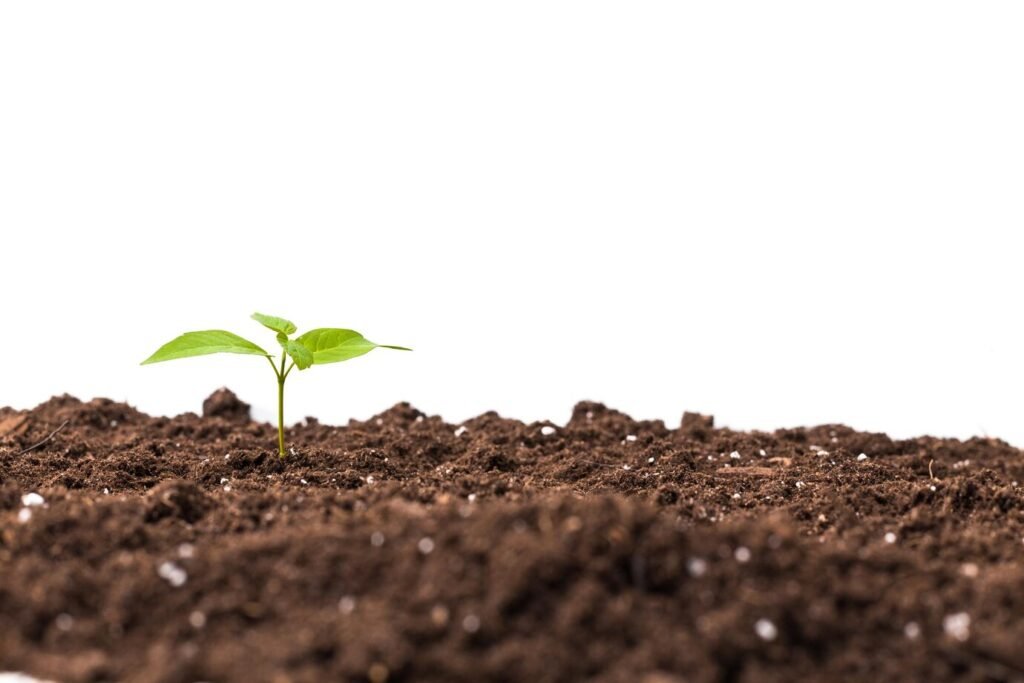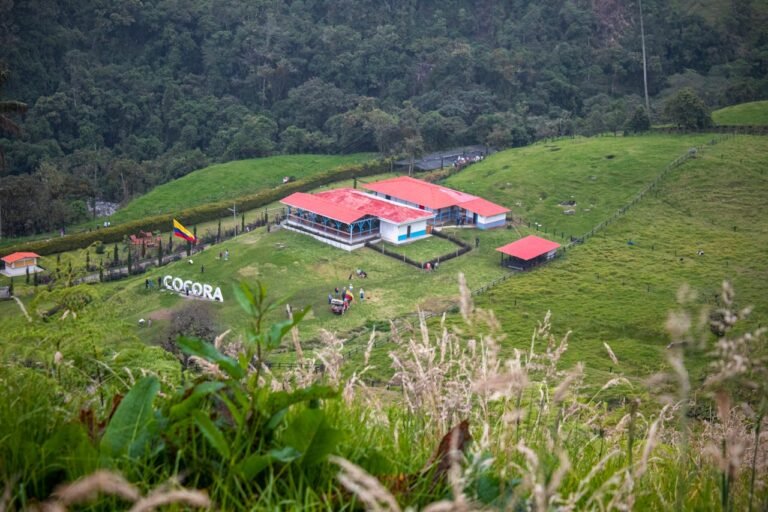When we think about what makes soil fertile and crops flourish, we often picture fertilisers, irrigation, or even the right weather, and think less about the role of Natural Organic Matter (NOM). It’s not something you can easily see, but its presence is vital. This humble mix of decomposed plant and animal material is the lifeblood of healthy soil, quietly fueling ecosystems and feeding the world.
In today’s world, where climate change, soil degradation, and food insecurity are pressing concerns, understanding NOM isn’t just for scientists or farmers—it’s for all of us. This natural component plays a key role in storing carbon, retaining water, and supporting the microbial life that keeps soil alive. Without it, soil becomes lifeless dirt, unable to sustain crops or regenerate itself.

In This Article
- What Is Natural Organic Matter?
- Examples of Natural Organic Matter in Agriculture
- The Critical Roles of Natural Organic Matter in Sustainable Farming
- Practical Strategies to Increase Natural Organic Matter
- Overcoming Challenges in Managing Natural Organic Matter
- Case Study: The Rodale Institute’s Long-Term Farming Systems Trial
- Conclusion: A Call to Action
What Is Natural Organic Matter?
Natural Organic Matter is a rich mix of carbon-based compounds found in soil, formed from the breakdown of dead plants, animals, and microorganisms. It’s constantly changing, cycling through stages of decay and renewal. This process not only feeds the soil but also supports the plants, microbes, and insects that depend on it.
NOM is made up of three main components:
- Humic Substances: These are the stable, dark-colored materials that give rich soil its deep brown or black hue. They include humic acids, fulvic acids, and humin. Humic substances are highly resistant to decomposition and play a crucial role in improving soil structure, water retention, and nutrient availability. They also help bind soil particles together, reducing erosion and enhancing root growth.
- Non-Humic Substances: These are the fresher, more easily decomposed materials like sugars, amino acids, proteins, and plant residues. They serve as a quick energy source for soil microbes and are essential for the initial stages of decomposition. This active fraction of NOM is influenced by factors such as weather conditions, soil moisture, and agricultural practices.
- Microbial Biomass: This includes the living microorganisms in the soil, such as bacteria, fungi, and protozoa. These microbes are the engines driving the decomposition process, breaking down organic materials and transforming them into forms that plants can absorb. They also contribute to the formation of humic substances and play a vital role in nutrient cycling and soil fertility.
Examples of Natural Organic Matter in Agriculture
1. Crop Residues: Letting Nature Do the Work
After harvest, many farmers choose to leave behind crop residues—such as corn stalks, leaves, and roots—instead of removing or burning them. In Iowa, no-till farming has gained traction, with adoption increasing from 26.47% in 2012 to 30.88% in 2017. This practice helps protect the soil from erosion, retains moisture, and gradually increases organic carbon levels, which is vital for long-term soil fertility. According to the USDA, adopting no-till and cover crops can double microbial biomass in the topsoil within two years, enhancing soil health and productivity.
2. Animal Manures: Recycling Nutrients Naturally
Manure from livestock is a time-tested fertiliser, rich in essential nutrients like nitrogen, phosphorus, and potassium. In Vermont, organic dairy farms are adopting innovative manure management techniques. For instance, Southwind Farm uses a manure injector to deliver manure directly into the soil, reducing runoff and improving soil health. Additionally, some farms are incorporating food waste into anaerobic digesters along with manure to produce renewable energy, generating nearly 6,000 megawatt-hours of electricity annually—enough to power 550 homes.
3. Green Manures: Growing Fertility
Green manures are crops grown specifically to be ploughed back into the soil, enriching it with organic matter and nutrients. In India, farmers often plant sunn hemp (Crotalaria juncea) as a green manure. This fast-growing legume adds significant amounts of nitrogen to the soil, improving fertility and structure. Studies have shown that sunn hemp can effectively increase soil nitrogen levels and improve subsequent crop yields.
4. Compost: Turning Waste into Wealth
Composting transforms organic waste, like kitchen scraps and yard trimmings, into nutrient-rich soil amendments. In Detroit, urban farmers are leveraging compost to rejuvenate post-industrial soils. Programs like the Detroit Community Compost initiative provide training and resources to local growers, helping them improve soil health and support community agriculture. This approach not only reduces waste but also fosters local food production and environmental stewardship.
5. Biochar: Ancient Technique, Modern Benefits
Biochar is a charcoal-like substance produced by heating organic material in a low-oxygen environment. When added to soil, it enhances fertility, retains moisture, and sequesters carbon. In Australia, regenerative farms are applying biochar to improve drought resistance and soil health. Research indicates that biochar can increase root biomass by over 8% under drought conditions, contributing to more resilient agricultural systems.
Learn More: Best Organic Fertilisers for Vegetables
The Critical Roles of Natural Organic Matter in Sustainable Farming
1. Enhancing Soil Structure and Water Retention
NOM acts as a natural glue, binding soil particles into aggregates. This aggregation improves soil structure, leading to better aeration, drainage, and water-holding capacity. Healthy soils rich in organic matter can retain more moisture, which is crucial during periods of drought.
A study by Rattan Lal (2020) highlighted that increasing soil organic matter enhances water retention, especially at field capacity, thereby increasing the plant-available water capacity.
On our family farm, we’ve experienced this firsthand. By incorporating cover crops like clover and leaving crop residues on the fields, we’ve increased the organic matter in our soil. As a result, our fields stay moist longer during dry spells, reducing our reliance on irrigation.
2. Nutrient Cycling and Availability
NOM serves as a reservoir of essential nutrients, releasing them slowly over time. This slow-release mechanism ensures that plants have a steady supply of nutrients like nitrogen, phosphorus, and potassium, which are vital for growth.
A long-term study at the Russell Ranch Sustainable Agriculture Facility, managed by the University of California, Davis, demonstrated that organic systems utilising compost and cover crops produced higher yields compared to conventional systems. The organic plots showed improved nutrient availability, leading to better crop performance.
3. Carbon Sequestration and Climate Mitigation
Soils rich in organic matter act as significant carbon sinks, capturing and storing atmospheric carbon dioxide (CO₂). Enhancing soil organic matter globally has the potential to offset substantial amounts of CO₂ annually.
The Intergovernmental Panel on Climate Change (IPCC) emphasises the importance of sustainable land management practices, including increasing soil organic matter, to combat climate change. Such practices not only reduce greenhouse gas emissions but also improve soil health and productivity.
Expert Insight: “Building soil carbon isn’t just good for farmers; it’s essential for humanity.” — Dr. Christine Jones, Soil Carbon Expert.
4. Boosting Biodiversity and Resilience
NOM fuels a diverse community of soil organisms, including bacteria, fungi, protozoa, and nematodes. A single gram of healthy soil can contain up to a billion microorganisms. This biodiversity enhances soil resilience, aiding in natural pest control and disease suppression. For example, protozoa feed on harmful bacteria, helping to maintain a balanced microbial ecosystem.
By supporting a rich soil microbiome, NOM contributes to healthier crops and more sustainable farming systems.
Practical Strategies to Increase Natural Organic Matter
1. Plant Cover Crops and Green Manures
Cover crops like clover, rye, and vetch are more than just ground cover—they’re soil builders. These plants fix nitrogen, add biomass, and protect against erosion. Over time, they enrich the soil with organic matter.
Research from the USDA’s Economic Research Service indicates that while changes in soil organic matter from cover crops can be modest in the first few years, they contribute to long-term soil health improvements.
2. Compost Everything
Composting transforms kitchen scraps and yard waste into nutrient-rich soil amendments. Urban farming initiatives, like those in Detroit, have demonstrated how composting can rejuvenate degraded soils and support local food production.
Tip: Maintain a carbon-to-nitrogen ratio of about 30:1 in your compost pile for optimal decomposition.
3. Reduce Tillage
Tilling disrupts soil structure and microbial communities. Adopting no-till or reduced-till practices preserves organic matter and promotes a healthier soil ecosystem.
Studies have shown that no-till systems can increase soil carbon levels significantly over time, enhancing soil fertility and structure.
4. Integrate Livestock with Mob Grazing
Integrating livestock through mob grazing—rotating animals through paddocks—mimics natural grazing patterns. This approach encourages the trampling of plant material into the soil, enhancing organic matter content.
Gabe Brown’s farm in North Dakota exemplifies this practice. By combining cover crops with rotational grazing, he increased his soil’s organic matter from less than 2% to over 5% in under a decade
5. Apply Biochar
Biochar, a form of charred organic material, is added to soil to improve fertility and sequester carbon. It enhances microbial habitats and nutrient retention.
Research from Utah State University found that applying biochar to silage corn fields under full irrigation increased yields by 11% in one year.
Overcoming Challenges in Managing Natural Organic Matter
1. Balancing Inputs and Outputs
Adding organic materials like compost or manure enriches the soil, but overdoing it can lead to nutrient imbalances or leaching. Excess nutrients, especially nitrogen, may leach into groundwater, posing environmental risks. Regular soil testing is crucial to determine existing nutrient levels and tailor organic additions accordingly.
2. Local Adaptations Are Key
Soil management practices effective in one region may not work in another due to differences in climate, soil type, and crop needs. For instance, strategies suitable for cooler, wetter climates may not be appropriate for drier, arid conditions. It’s important to adapt organic matter management strategies to local conditions, considering factors like rainfall patterns and soil composition.
3. Cost and Labour
Building soil organic matter is a long-term investment that requires time and effort. Practices like composting, cover cropping, and reduced tillage can be labour-intensive and may involve upfront costs. However, the long-term benefits, such as improved soil fertility, reduced need for chemical fertilisers, and enhanced drought resilience, often outweigh the initial investments.
Pro Tip: Start small. Implement organic matter practices on a single field or garden bed, monitor the results, and expand gradually based on observed benefits.
Addressing Common Misconceptions
Misconception 1: “You can add too much organic matter.”
Reality: While excessive application of certain organic materials, like manure, can lead to nutrient imbalances, adding compost, cover crops, and mulches in appropriate amounts rarely “overloads” the soil. It’s about balance and understanding your soil’s specific needs.
Misconception 2: “Organic matter is only for organic farms.”
Reality: Conventional farmers also benefit from practices that enhance soil organic matter. Techniques like cover cropping, no-till farming, and compost application are increasingly adopted in conventional agriculture to improve soil health and productivity. According to the USDA, cover crop adoption increased by 50% from 2012 to 2017, reflecting a growing recognition of their benefits across different farming systems.
The Challenge of Measuring Organic Matter
Monitoring changes in soil organic matter can be challenging because improvements occur gradually. It may take 3 to 5 years of consistent practices to see noticeable differences in soil tests. This slow progress can be discouraging, but patience is key.
Tip: Don’t get discouraged by the slow pace of change. Soil transformation is a marathon, not a sprint. Consistent application of organic matter management practices will yield benefits over time, leading to healthier, more productive soils.
Learn More: How Does Industrial Agriculture Promote Farming Techniques that are Ecologically Destructive?
Case Study: The Rodale Institute’s Long-Term Farming Systems Trial
Since 1981, the Rodale Institute in Pennsylvania has been conducting the Farming Systems Trial, comparing organic and conventional farming methods side by side. This long-term study provides valuable insights into how different farming practices affect soil health and crop performance.
Background
The trial was established to evaluate the sustainability of organic agriculture compared to conventional methods. Over the years, it has become the longest-running study of its kind in the United States.
Findings
- Higher Soil Organic Matter: Organic plots showed increased levels of soil organic matter compared to conventional plots. For example, organic manure systems reached 4.5% soil organic matter, while conventional systems increased from 3.3% to 3.6%.
- Improved Yields During Drought: In years of drought, organic plots yielded 31% more than conventional plots. This resilience is attributed to better soil structure and moisture retention in organic systems.
- Enhanced Carbon Sequestration: Organic soils stored significantly more carbon, contributing to climate change mitigation efforts.
Lesson
The Rodale Institute’s findings highlight that building organic matter is not just about sustainable farming—it’s about creating resilient systems capable of withstanding environmental stresses. Investing in soil health through organic practices leads to long-term benefits for both the farm and the planet.
Conclusion: A Call to Action
Natural Organic Matter is the unsung hero of sustainable farming. It’s not just “dirt”; it’s life itself. By understanding, nurturing, and respecting NOM, farmers can heal degraded lands, improve food security, and even help slow climate change.
As I walk my own modest vegetable garden today, barefoot like I did years ago, I feel a profound gratitude for the living soil beneath me—and a renewed commitment to protect it.
Actionable Takeaways:
- Commit to cover cropping this season.
- Start a compost pile or connect with a local composting service.
- Adopt no-till or reduced-till practices where feasible.
- Integrate livestock responsibly if possible.
- Educate others about the value of healthy soils!
Let’s leave the earth better than we found it—one handful of rich, living soil at a time.







